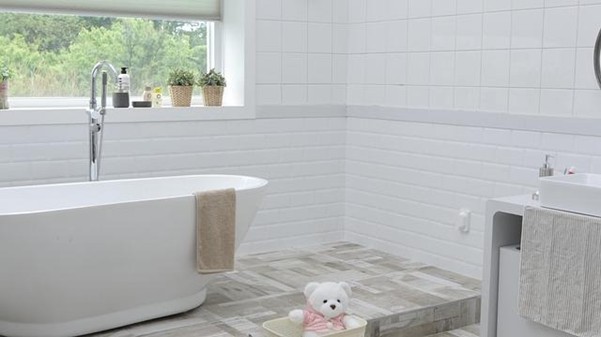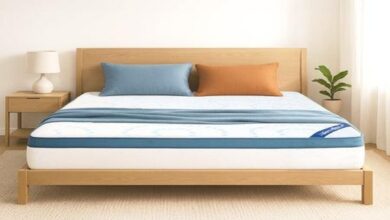How To Choose The Right Shower Panels For Your Home?

Shelving in the bathroom can be the most rewarding home improvement project, and the right wall finish can make a big difference to how it looks and performs. Since the turn of the century, the shower panel has been one of the most sought-after options by most homeowners seeking the perfect blend of looks and performance, with dramatic good looks, low maintenance, and effective waterproofing.
Compared to grout-covered and high-maintenance traditional tiles, shower panels offer a watertight, glass-like finish that’s functional and beautiful. But with so many materials, finishes, and sizes to choose from, what to look for is what will truly make all the difference between a panel that’ll endure and a disappointment.
This article covers the most important things to look at when selecting shower panels for your Home—a guide to making the right selection and getting the right one to enhance the functionality and appearance of your bathroom for years to come.
1. Material Quality
When selecting a shower panel, the quality of the material should be the first consideration. The bottom material will indicate how water-resistant and long-lasting it will be. PVC and acrylic panels are very lightweight and simple to install and are therefore the bathroom favorite for residential use. Laminate and composite panels offer solidity and a smoother finish that can replicate a stone or marble appearance.
For a maximum luxury environment, panels of solid surface offer strength and enduring life but might be a little higher in price. Always make sure that the shower panel is waterproof and can be applied under high humidity conditions. The right material ensures your bathroom is free from mold, low maintenance, and pleasing to the eye, even after decades of use.
2. Waterproofing Capability
Waterproofing is the most critical feature of any shower panel. The panel should have a 100% waterproof core so that water cannot pass through to the back of the wall. Edge sealed joints and tongue-and-groove joints provide a watertight seal, offering a leak- and mould-resistant surface that is impenetrable.
You should also check whether the backing material is coated with a waterproof layer or a laminate seal for extra protection. Even minor water penetration in a wet room like a bathroom can cause long-term damage, with the cost to repair being high. Having your panels properly sealed and fitted will shield your bathroom walls, keeping them safe and dry for years to come.
3. Size and Thickness
The thickness and size of panels can actually make a big difference to how they appear and function. Thicker panels cover more surface area on a wall with fewer joints visible, for a neater, cleaner finish. Not only is it an improvement in looks, but it also means there are fewer points at which water is sure to leak.
Heavier panels, usually between 8mm and 10mm, are tougher and more resistant to impact, so they are best suited for use in the long run. Thin variants (about 5mm) are usable but need to be handled more carefully to fit in. When measuring, leave some room in case your preferred panels have to be trimmed and sealed at the edges.
4. Design and Finish
Your bathroom’s overall atmosphere depends to a great degree on the finish and tone of your panels. Contemporary styles suit all—anything from contemporary high-gloss finishes that bring light into small bathrooms to matte and textured panels with the warmth and sophistication of added finishes. You have the choice of styles that imitate the appearance and feel of natural materials like marble, stone, or wood, or choose contemporary styles if you have a minimalist look in mind.
When selecting a design, consider your lighting and other fittings; glossy finishes pick up light wonderfully, and matte colors provide depth. Ideal Home recommends neutral and stone-effect panels as one of the largest bathroom trends, combining sophistication with hard-wearing appeal.
5. Ease of Installation
Another issue is how easy your shower panels are to install. Some are self-fitting, while others require a professional fitter. Light PVC panels are easy to trim to size and glue over existing tiles—saving time and mess.
But heavier composite or laminate panels will need mechanical fixings and precision cutting to fit perfectly. Always fit according to the manufacturer’s guidelines and see that your wall surface is dry, smooth, and clean when fitting. Panels with coordinating trims and corner profiles will also assist in making fitting easier while maintaining your finish as professional as possible.
6. Maintenance Requirements
Should you want a low-maintenance bathroom, choosing the panel is significant. Porcelain surface panels are easy to clean and resist staining, soap scum, and limescale, and won’t harbor bacteria. Wipe with a soft cloth and mild detergent—no scrubbing or specialized cleaning agents needed. Gloss finishes are more prone to showing water spots, while matte or texture designs hide marks better.
Effective ventilation also stops condensation from building up. For busy families, having panels that require minimal maintenance not only saves time but also ensures your bathroom remains looking great with very little effort whatsoever.
7. Cost and Long-Term Value
When considering alternatives, it’s easy to go with the cheapest one—but cost is just half of it. Consider the installation fees, extras such as trims and sealants, and durability. Shelling out a bit more upfront on a high-quality, long-lasting panel can pay off in the long term by preventing repairs or replacements.
Also consider the energy-saving benefits: panels now come with a secondary layer of insulation, which means your shower is warmer and less likely to lose heat. The cost-value goal is the ultimate outcome—investing in panels that are performance-enhancing, beautiful, and long-lasting always turns out to be a good gamble.
8. Integration with Your Bathroom Design
Before purchase, take into account how your chosen panels will fit your existing arrangement. Measure precisely around fixtures like taps or mixers, windows and corners. Panels that are too short or too wide may have to be trimmed, so consider that first before cutting.
If your bathroom has a unique shape or sloped ceiling, flexible panels may be easier to fit. Consider where trims and joins are placed to ensure the final design looks seamless. Proper planning prevents installation issues and ensures your shower area looks professionally finished and balanced.
Wrapping Up
Choosing the perfect shower panel for your house is all about understanding what actually works for you—both in terms of looks and purpose. Start with the basics: choose a durable, water-resistant, and low-maintenance material. Next, consider your room, your aesthetic, and your future budget. The perfect panel not only protects your walls but also adds to your bathroom’s overall look and feel.
Whether you are drawn to a minimalist, clean marble finish, a wood warmth finish, or a textured, bold finish, the right mixture is just waiting for you. When planned well and installed well, you can enjoy a bath that is as durable as it is beautiful and functional—a space where fashion and function meet beautifully.


